Sony X85L is a model from 2023 that will be continued in the offering for 2024 by the Japanese manufacturer. Its greatest advantage is the Google TV system. It currently provides the largest access to applications, so we need not worry that one of our favourite applications will be missing. The intuitive interface and voice control feature using Google Assistant make daily use of the television comfortable and modern. As for picture quality, Sony X85L performs well. Thanks to local dimming (albeit with a very average number of zones), black levels look quite decent. Additionally, its fairly high brightness allows for comfortable television viewing during the day, even in well-lit rooms. Furthermore, the television offers a programme recording function with built-in tuners, which is a great convenience for those wanting to control what and when they watch. In terms of motion smoothness, X85L does not disappoint either. The 120 Hz panel and Motionflow system ensure smooth display of dynamic scenes, satisfying both movie enthusiasts and sports fans. The television is also equipped with a range of features for gamers, including VRR, Game Bar and G-Sync support, making it an attractive choice for gaming enthusiasts. Of course, the television is not without its faults. The lack of HGiG support and high input lag in Dolby Vision mode can be disappointing for more demanding gamers. Additionally, the compromise between font readability and image smoothness when connected to a PC may not appeal to everyone. Nevertheless, Sony X85L is a decent piece of equipment that is particularly worth attention if it can be purchased on promotion.
- Matching (Score)
- Our verdict
- TV appearance
- Where to buy
- Contrast and black detail
- HDR effect quality
- Factory color reproduction
- Color reproduction after calibration
- Smoothness of tonal transitions
- Image scaling and smoothness of tonal transitions
- Blur and motion smoothness
- Console compatibility and gaming features
- Input lag
- Compatibility with PC
- Viewing angles
- TV efficiency during daytime
- Details about the matrix
- TV features
- Apps
- Playing files from USB
- Sound
Sony X85L vs LG OLED C5
Direct compare
Check the best price offer:
LG OLED C5X85L
C5 / C54 / C5ELB / C51

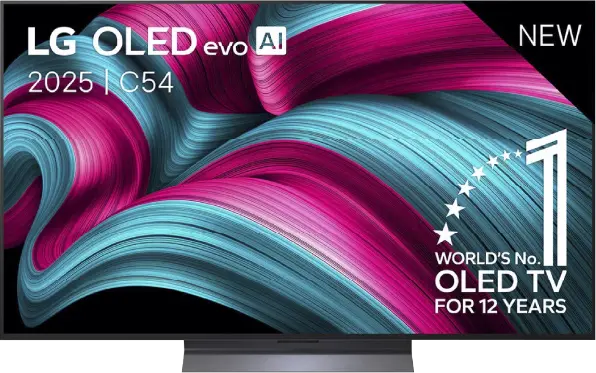
Resolution: 3840x2160
System: Google TV
Model year: 2023
Complete the survey to find out the result

Panel type: WRGB OLED
Resolution: 3840x2160
System: WebOS
Model year: 2025
Complete the survey to find out the result

Overall rating
6.9
8.2
Movies and series in UHD quality
6.4
8.5
Classic TV, YouTube
6.3
8.9
Sports broadcasts (TV and apps)
6.6
8.6
Gaming on console
7.8
9.4
TV as a computer monitor
5.6
8.6
Watching in bright light
6.5
6.2
Utility functions
7.7
7.9
Apps
9.6
9.1
Sound quality
6.9
7.2
Complete the survey to find out what fits your preferences
Advantages
Advanced Google TV System
Good contrast
Good brightness
Features for gamers - VRR, Game Bar and G-Sync
Base with adjustable legs
Excellent black levels and infinite contrast thanks to the OLED panel
Above-average brightness (for an OLED TV)
Nearly reference image quality after calibration
A full suite of features for gamers: 4xHDMI 2.1, low input lag, HGiG, VRR and more
Very good motion smoothness – 144 Hz OLED panel
Intuitive and modern WebOS system
Convenient Magic remote control with gyroscope
Disadvantages
No support for HGiG, Dolby Vision with high input lag
Font readability issues on PC at 120 Hz
Only 2 HDMI 2.1 ports - with one serving as eARC
Different versions of the remote in derivative models – it's hard to predict which version we will get
Average reflection suppression – it can be distracting in very bright light
No support for DTS:X – an external amplifier is required for full compatibility with this format
Our verdict
LG C5 is a very successful continuation and, in some aspects, even a step forward compared to last year's model C4. The biggest change is the significantly higher brightness – for the first time in the history of the C series, the barrier of 1000 nits has been exceeded, which greatly improves the quality of the HDR effect. Both films and series look more dynamic as a result, and bright scenes finally have the proper "glow". After calibration, the picture quality is nearly reference-level, and one could get the impression that we are dealing with equipment that is much more expensive than its price suggests. C5 is also one of the best choices for gamers – four full HDMI 2.1 ports, low input lag, support for VRR, G-Sync, and correctly implemented HGiG. Additionally, the 144 Hz panel makes not only gaming but also watching sports pure pleasure. The convenient WebOS system and the Magic remote with cursor control function also deserve praise – everything works smoothly and intuitively. This is a television that you simply want to use.
However, there were a few minor reservations. This year, LG has decided to abandon support for DTS codecs, which may be problematic for those using physical media and collections of Blu-ray films. It is also worth noting the confusion regarding the different versions of the remote – depending on the model designation, we may receive a completely different remote than the one we held during our tests. Despite these few comments, LG C5 is a television that makes an excellent impression in almost every regard. Brightness, colours, gaming features, smoothness of the image, and overall build quality make it one of the best OLEDs in its class.
TV appearance




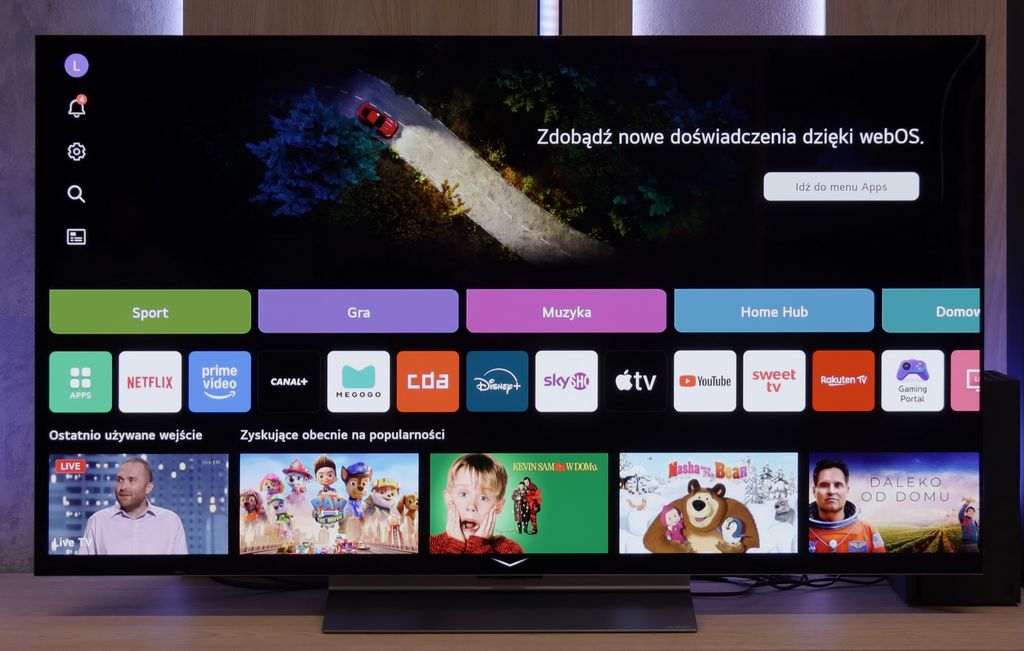
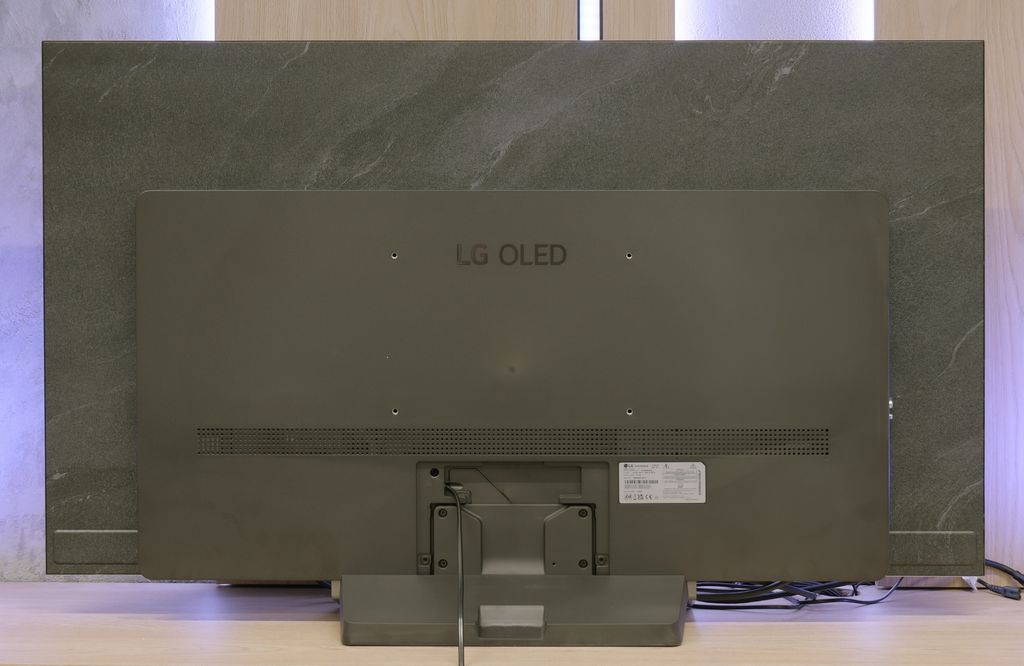
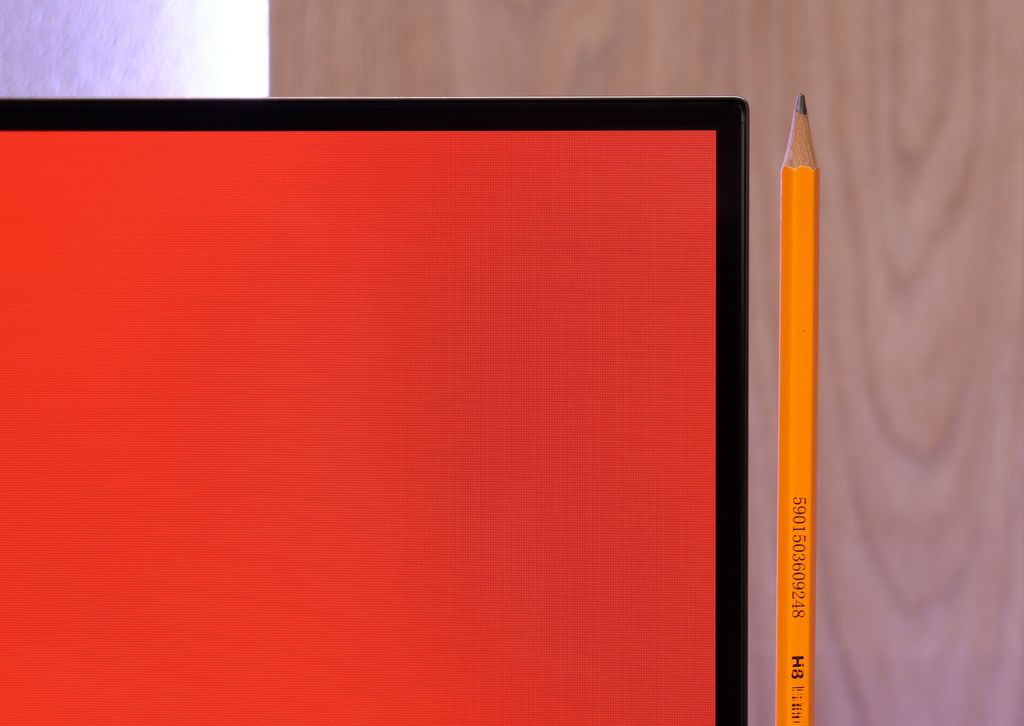
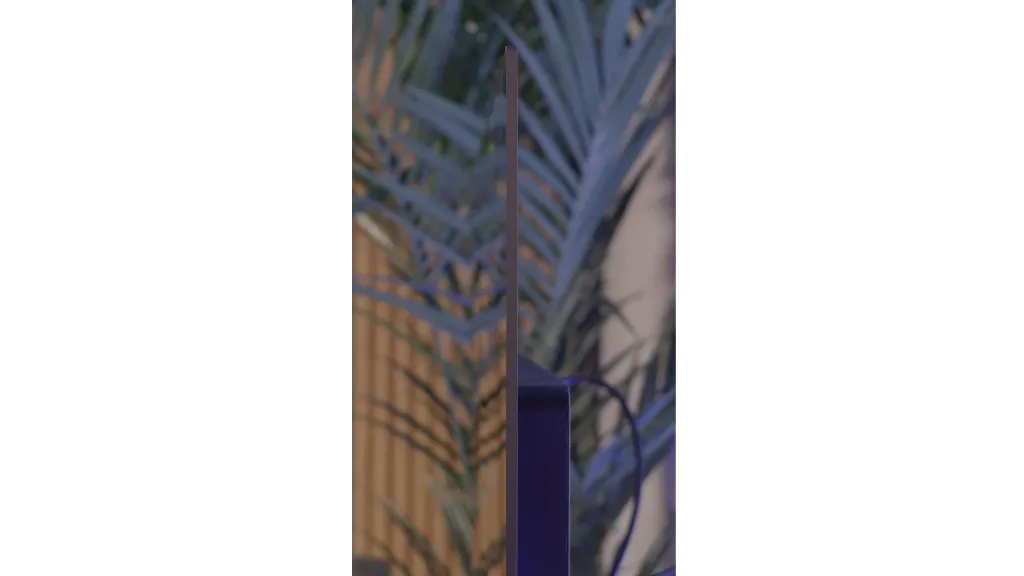
Contrast and black detail
6.7/10
10/10
Local dimming function: Yes, number of zones: 24 (4 x 6)
Contrast:

Result
8,700:1

Result
7,800:1

Result
19,200:1

Result
5,750:1

Result
5,150:1

Result
∞:1

Result
∞:1

Result
∞:1

Result
∞:1

Result
∞:1
Halo effect and black detail visibility:

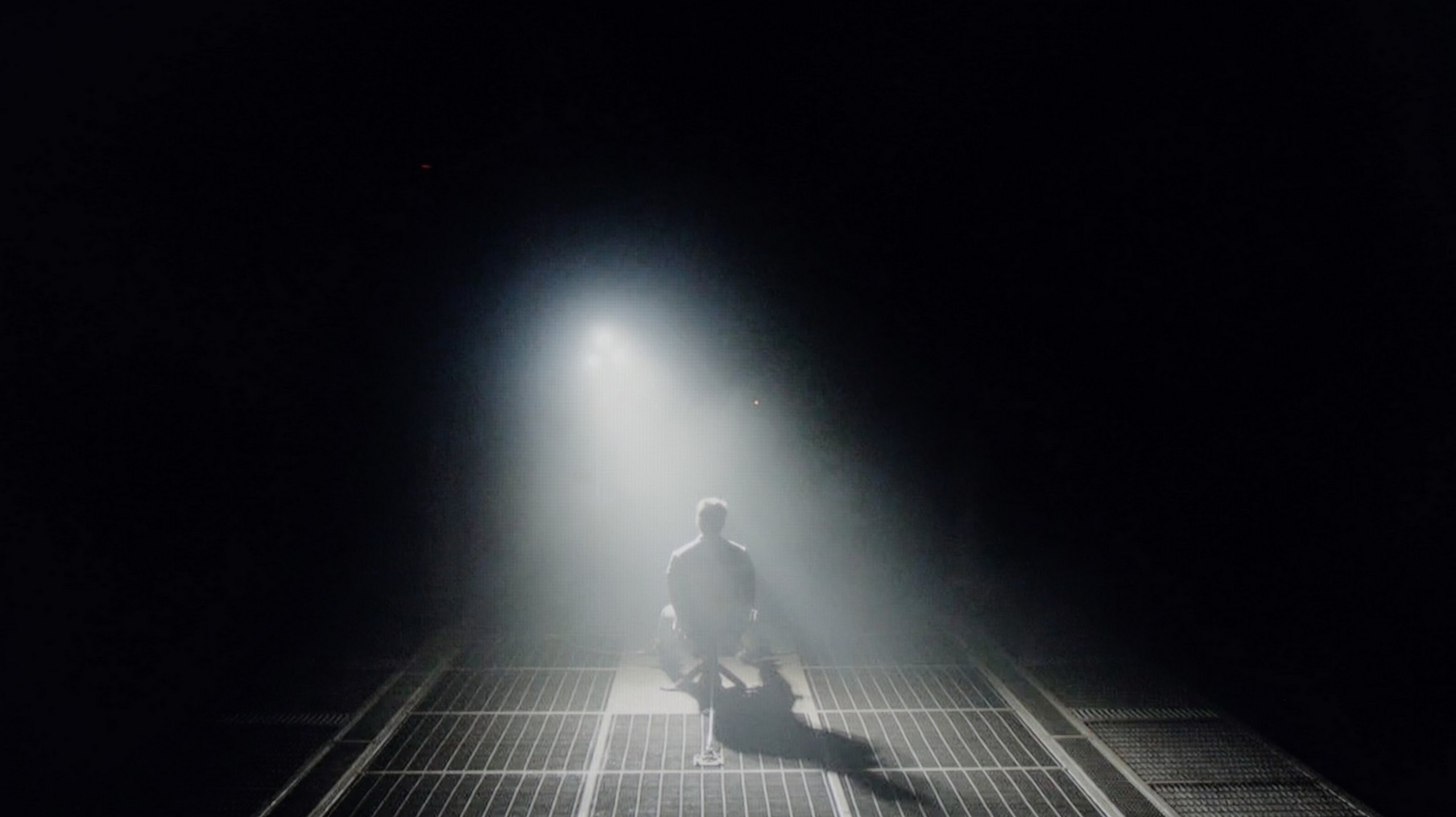
The Sony X85L television is equipped with a VA panel, which in itself offers quite good contrast. Additionally, this model features local dimming technology – in the 55-inch version, it encompasses 24 zones. Although this number is not impressive, it naturally increases with the size of the television. The contrast in the X85L is good, though not the best, especially in comparison to other televisions also equipped with advanced local dimming technology. Results at a level of 8000:1 are satisfactory, but appear average in the context of competition. In some cases, such as the third scene from the film Arrival, the contrast is promising and performs fairly well. This is thanks to the very good dimming algorithm that Sony has employed in its televisions for years. Unfortunately, due to the limited number of local dimming zones, the television struggles with noticeable blooming, which can be observed, for example, in scenes with the helicopter from the film Sicario 2.
In the category of black and contrast, the LG C5 fits perfectly into what we have come to expect from OLED televisions – it is simply ideal. Thanks to the use of an organic matrix (WOLED), each pixel shines independently, which results in infinite contrast and perfect black. There are no halos, streaks, or other typical LCD television artifacts here. Details in bright parts of the image are perfectly visible, and watching in a darkened room is pure pleasure. If someone is looking for a television for evening screenings with great contrast – the C5 is a very strong contender.
HDR effect quality
5.8/10
7.2/10
Luminance measurements in HDR:

Result
736 nit

Result
415 nit

Result
535 nit

Result
249 nit

Result
599 nit

Result
1079 nit

Result
1059 nit

Result
1120 nit

Result
1094 nit

Result
707 nit
Scene from the movie “Pan” (about 2800 nits)


Scene from the movie “Billy Lynn” (about 1100 nits)


Static HDR10


Dynamic: Dolby Vision
Dynamic: Dolby Vision


HDR luminance chart:
LG OLED C5
HDR luminance
Luminance of RGB colors
Sony X85L
HDR luminance
The Sony X85L television offers solid HDR performance with a brightness level of 750 nits, which is sufficient to enjoy vivid effects. In scenes of moderate difficulty, such as the first, third, or fifth test scenes, a brightness of around 600 nits allows one to fully experience the HDR effect. Unfortunately, in more demanding segments, like the scene from the film Sicario 2, the television reveals its limitations. Drops in brightness to 250 nits cause the HDR effect to lose its impressive quality, resembling rather ordinary SDR. Nevertheless, it is worth highlighting the very good coverage of the DCI-P3 colour palette at 95%, which definitely deserves praise and positively impacts the overall image quality.
LG C5 finally does what we have been waiting for years in the C series – it exceeds 1000 nits of brightness! This is a significant change compared to previous models in the series, and it is very important – because most HDR content on streaming platforms is now created around such luminance. The image finally has the proper "shine," and the details in the highlights look as they should even without the use of dynamic metadata. However, there are scenes where the C5, like most OLED televisions, has certain issues. Especially when the screen needs to light up completely. In our test sequences, such as the bright shot from the film The Meg, the brightness clearly drops. Don't get us wrong, this result is not bad; it's more a reminder that OLED technology still has its limitations. Year by year they are becoming smaller, but still.
As for the colours? They are very good. Although the C5 does not match OLEDs with QD-OLED or Tandem RGB panels, the DCI-P3 coverage of 97% and 73% BT.2020 will satisfy even the more demanding viewers. The colours are saturated, natural, and very consistent in HDR material.
Factory color reproduction
5.8/10
8.2/10


Factory Mode
After calibration


Factory Mode
After calibration
The television Sony X85L was tested in IMAX Enhanced mode, which, although associated with world-class cinema, does not guarantee an image that aligns with the director's intention. The main problem is the white balance – there is a noticeable strong dominance of blue colour and significant shortcomings in red. As a result, the picture becomes unnaturally cool and looks artificial. Errors in colour reproduction were confirmed by the Colour Checker test, which showed considerable discrepancies – the colours were "scattered" like shots from a rifle, and only a few samples hit the target values. This clearly demonstrates that the accuracy of colour reproduction leaves much to be desired.
The brightness of the image is one of the positive features of the television. The gamma for HD content is at an acceptable level, although there are minor errors, but generally it is quite good. However, the characteristic of brightness for 4K materials remains a problem, controlled by the EOTF curve. It is evident here that very small, bright elements of the image are too dim, which is the result of the limited number of backlighting zones due to the design of the television.
LG C5, like other televisions we have tested, has been checked in the best possible factory mode – which remains the Filmmaker Mode. And here we have good news: in SDR materials, LG has once again done a solid job. The white balance and colour reproduction right out of the box are at a very high level. Most errors – both in balance and in the colour test (Colour Checker) – did not exceed a ΔE value of 3, which is the threshold above which differences become visible to the naked eye. Such factory settings would be desirable in a significantly larger number of televisions!
However, the situation looks different for HDR content, which is precisely what the C series was created for. Here, the C5 performs somewhat worse. The excessive presence of blue in the white balance causes the image to appear distinctly cooler – which affects, for instance, unnaturally pale skin tones or a slightly shifted tone of the entire scene. Fortunately, LG provides very precise calibration tools, and we – as always – made use of them.
Color reproduction after calibration
7.5/10
9.4/10




Thanks to the application of calibration tools offered by Sony X85L, the image quality has been significantly improved. After calibration, the white balance for HD content is much more stable, making colours appear more natural and enhancing the authenticity of the image. Although it is not perfect, these changes allow viewers to enjoy a more realistic colour reproduction, eliminating the previous cool tone. The gamma, which was already decent, has been adjusted to an even better version. As a result, tonal transitions and brightness are more consistent, positively affecting the depth and detail of the image.
As for 4K content, despite efforts, the white balance still struggles with a lack of red, which can lead to overly warm colours in some scenes. Synthetic tests showed that the EOTF curve in HDR is quite stable, with a slight enhancement in mid-bright scenes. However, in actual film material, the television can still be too bright with fine, light details, which is a result of the limitations of large local dimming technology.
Nevertheless, calibration has brought significant benefits, particularly in terms of colour accuracy, improving the overall image quality and providing a more natural and cohesive directorial vision.
We must honestly admit – in the case of the LG C5, very little was needed to achieve nearly perfect picture quality. After calibrating, we managed to reach compatibility with reference screens at a level that impresses even when compared to significantly more expensive models. The image after our adjustment looks exactly as filmmakers and series creators would want it – without colour distortions, with natural depth and subtle texture. LG has done a great job this year regarding factory settings and calibration potential. Chapeau bas!
Smoothness of tonal transitions
7.1/10
8.2/10












The fluidity of tonal transitions in Sony X85L is at a good level – the gradation of colours is smooth, even in more demanding areas, which makes the perception of scenes positive and natural. The biggest issues arise around shadows, where subtle colour joins may be visible. Despite this, the television performs well enough that most viewers should not notice these minor imperfections.
WOLED televisions have not been known for their perfect fluidity of tonal transitions until now. It has often been noticeable that there were subtle bands between colours – particularly in the darker parts of the image – which gave the impression that the hues did not transition smoothly, but rather "stair-stepped" slightly. This year, LG has made significant progress. In the C5 model, this issue has largely been eliminated. Indeed, in very dark scenes, subtle boundaries between colours can still be seen, but they are non-intrusive enough that hardly anyone except for more discerning viewers will notice them. For most users, the fluidity of tonal transitions in the C5 will simply be impeccable.
Image scaling and smoothness of tonal transitions
6/10
7.8/10
Smooth transition function

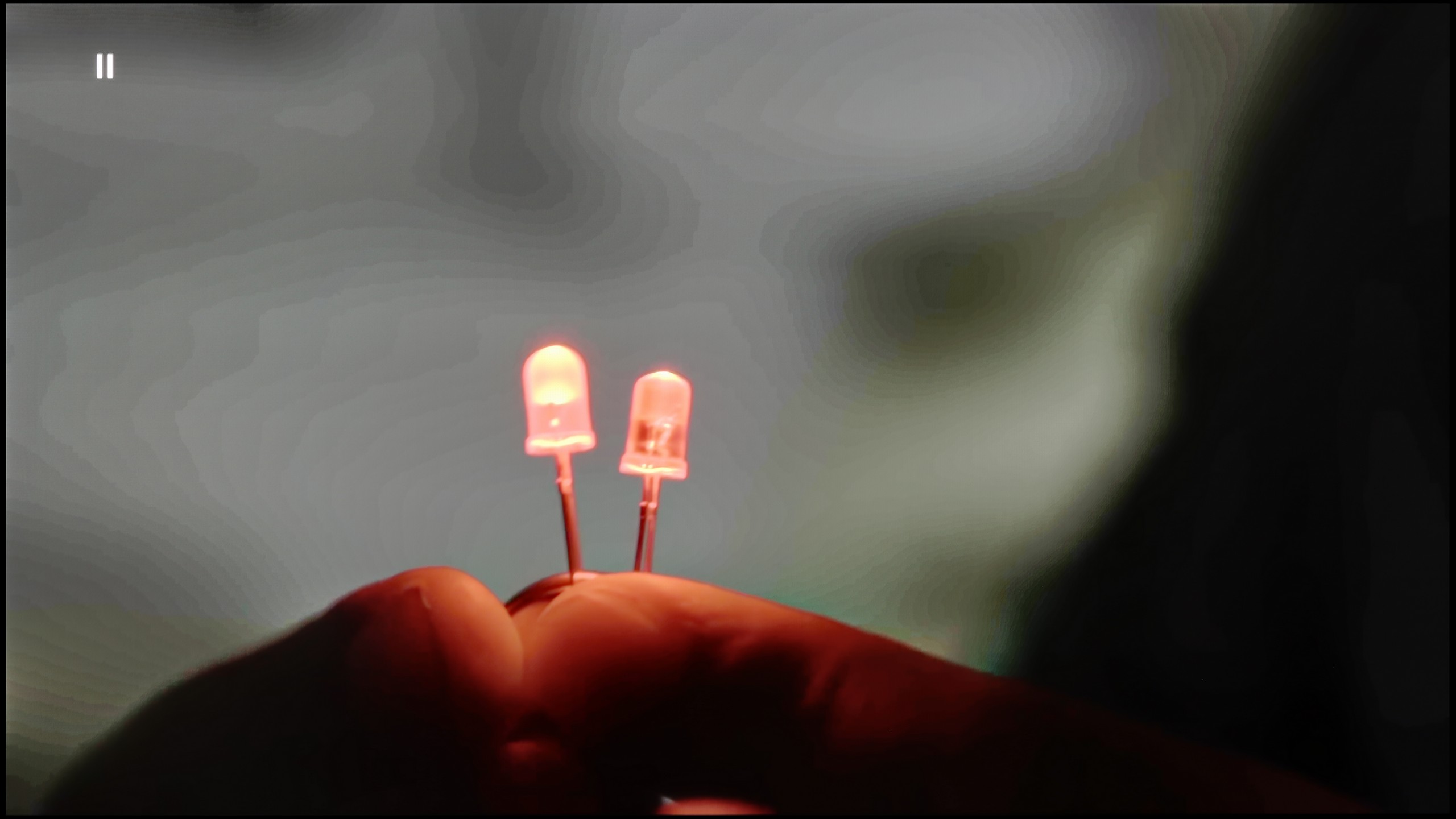
Image without overscan on the SD signal


In terms of smoothing tonal transitions, the Sony X85L television does not offer any dedicated enhancement options, which is a certain drawback. On the other hand, the image scaling performs quite well – the television adds a bit of artificial sharpness, which may make details such as tree branches more pronounced, although sometimes with noticeable jagged edges. This type of effect may appeal to some viewers who prefer a more detailed image.
LG C5 handles lower quality materials really very well. One of the main problems older WOLEDs faced was posterisation – that is, unwanted “stair stepping” in colour transitions. The C5 utilises a system feature that smoothens these transitions, which works surprisingly effectively. The banding effect is nearly completely eliminated, and the picture gains in coherence. Compared to last year's model, we have the impression that this feature works slightly less effectively – but the good news is that it does not undermine the structure of the image. Film grain, textures, and details remain on the screen – nothing is unnaturally smoothed out.
The C5 also excels at enhancing the quality of older recordings. Thanks to the α9 Gen6 processor (8th gen), the "scaling to 4K" performs really solidly. The image is clear, the details are sharp, and the only minor downside might be slightly noticeable edge sharpening on some borders. However, there is no issue with overscan here – the image is neither artificially cropped nor shifted, which is a significant plus and still not a given.
Blur and motion smoothness
8/10
8.5/10

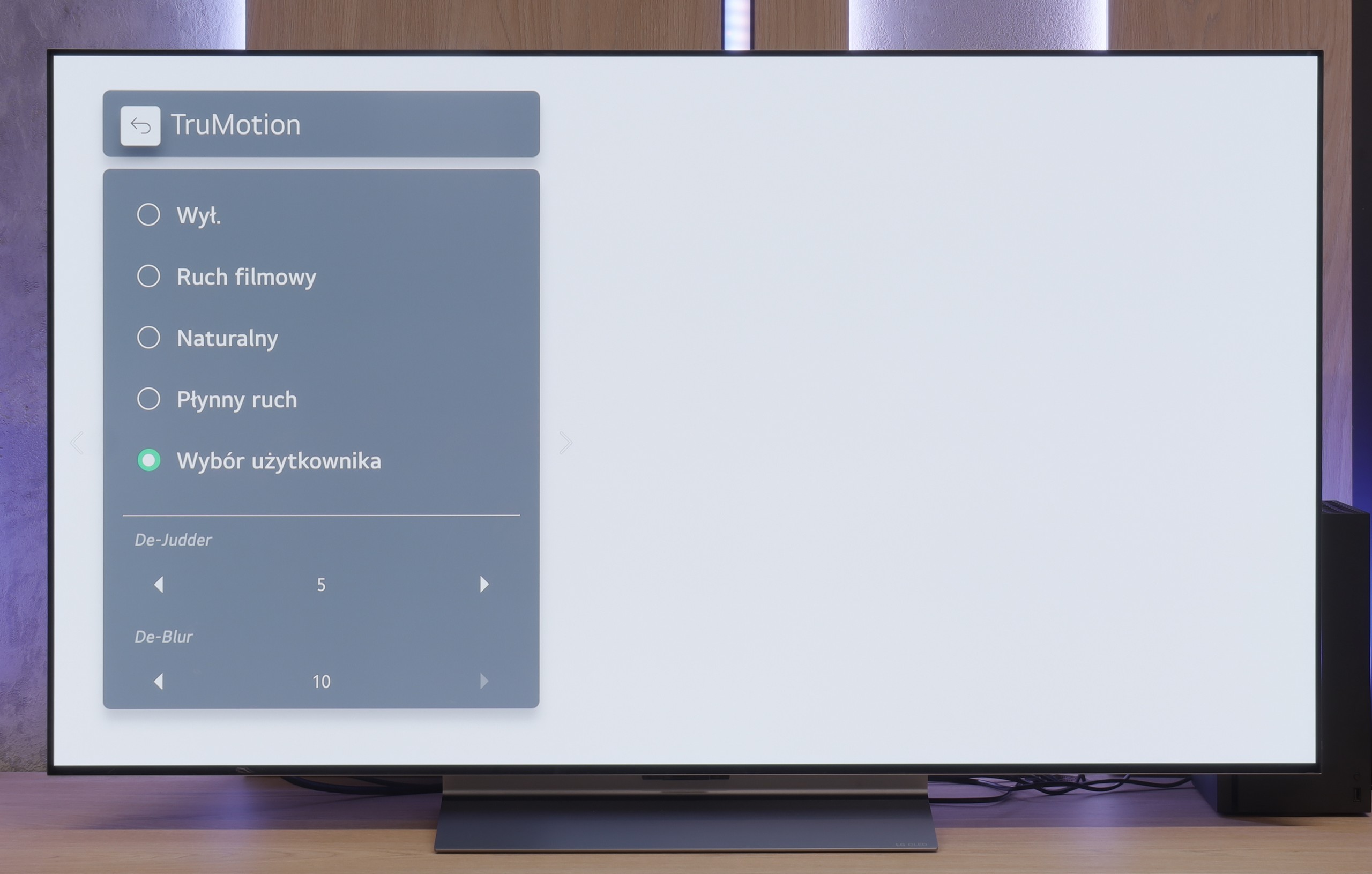
Blur (native resolution, maximum refresh rate):






Blur (BFI function enabled):



Image flickers in this mode
Sony X85L, equipped with a 120 Hz panel, will meet the expectations of a wide range of users – from sports and gaming fans to movie enthusiasts. Movie buffs will certainly appreciate the presence of one of the best motion smoothing systems, known as Motionflow. This system offers adjustment through sliders for smoothness and clarity – smoothness is responsible for motion fluidity, eliminating judder, while clarity improves the sharpness of fast scenes, reducing blur.
The LG C5 is equipped with a 144 Hz display, and this, combined with the virtually zero response time of the OLED pixels, makes it one of the best screens for watching dynamic content. It doesn't matter whether it's sports, fast-paced games, or just action – the image is razor-sharp.
And what about movies at 24 frames? LG thought of that too. The built-in "TruMotion" smoother allows you to adjust the picture to your own preferences. The "de-judder" slider increases fluidity in films, while "de-blur" gently reduces motion blur – though to be fair, it is nearly invisible here anyway.
Console compatibility and gaming features
7.8/10
10/10
- ALLM
- VRR
- VRR range48 - 120Hz40 - 144Hz
- Dolby Vision Game Mode
Yes, high input lag
- Correct implementation of HGIG
- 1080p@120Hz
- 1440p@120Hz
- 4K@120Hz
- Game bar

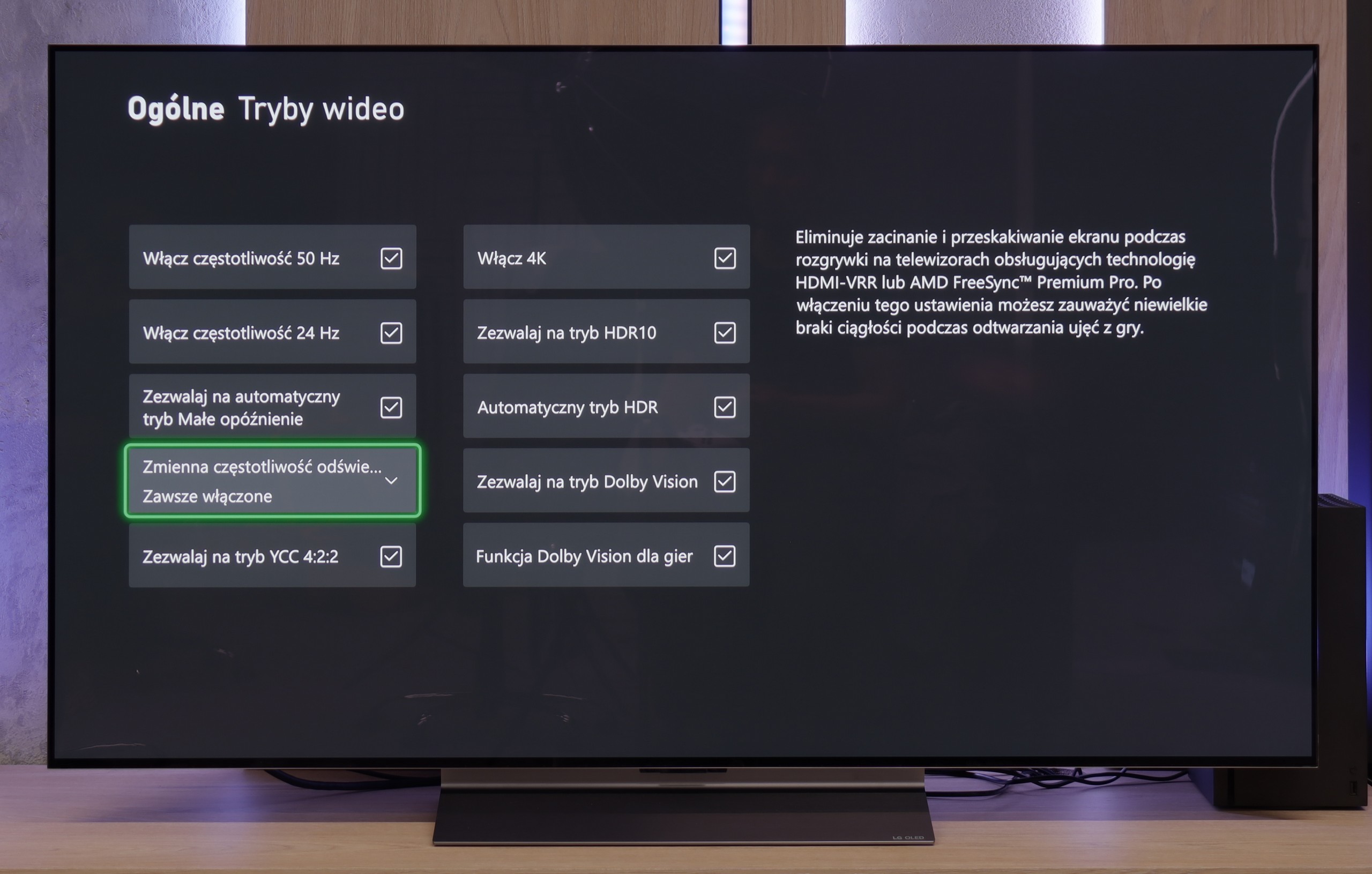

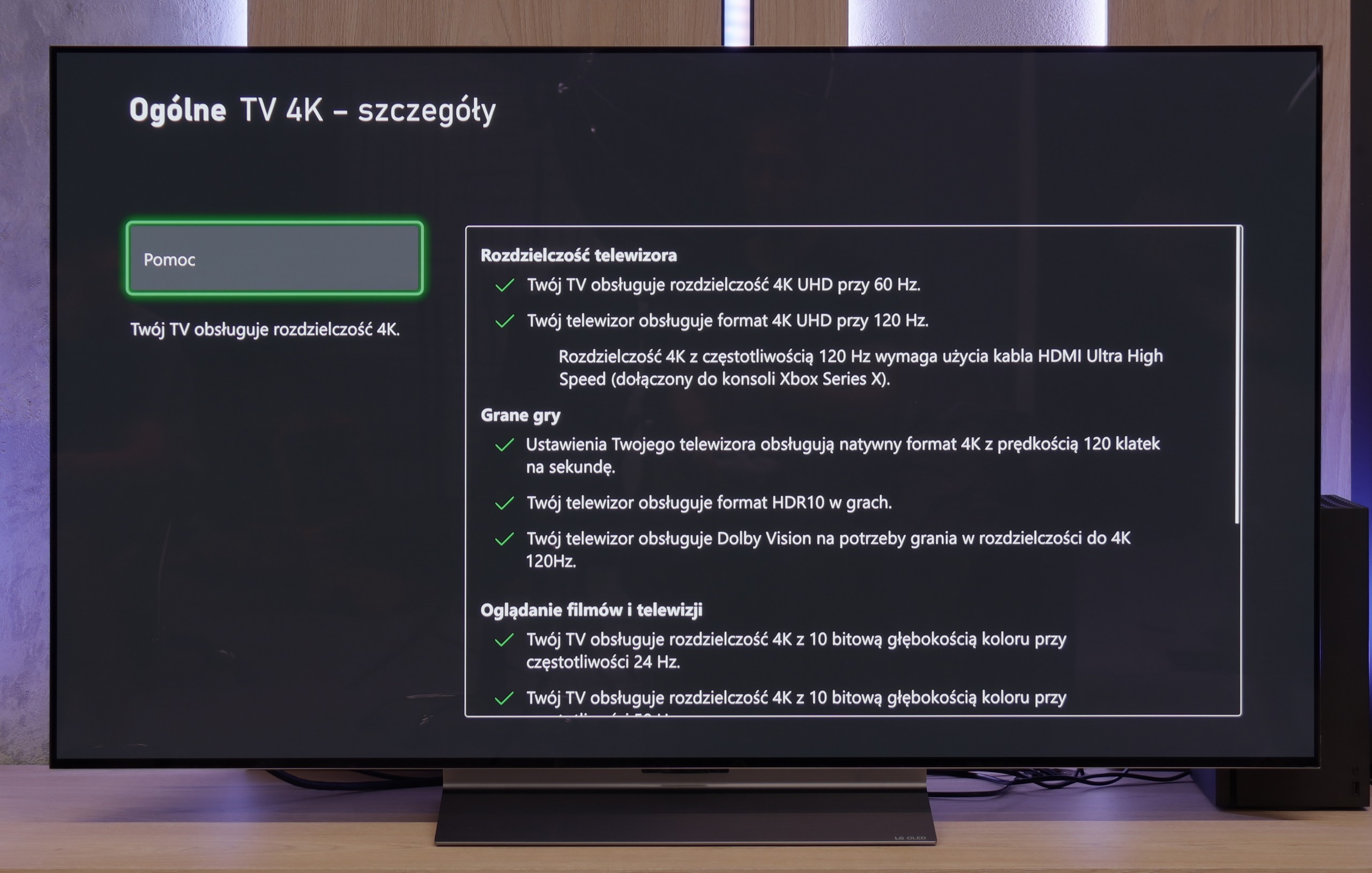

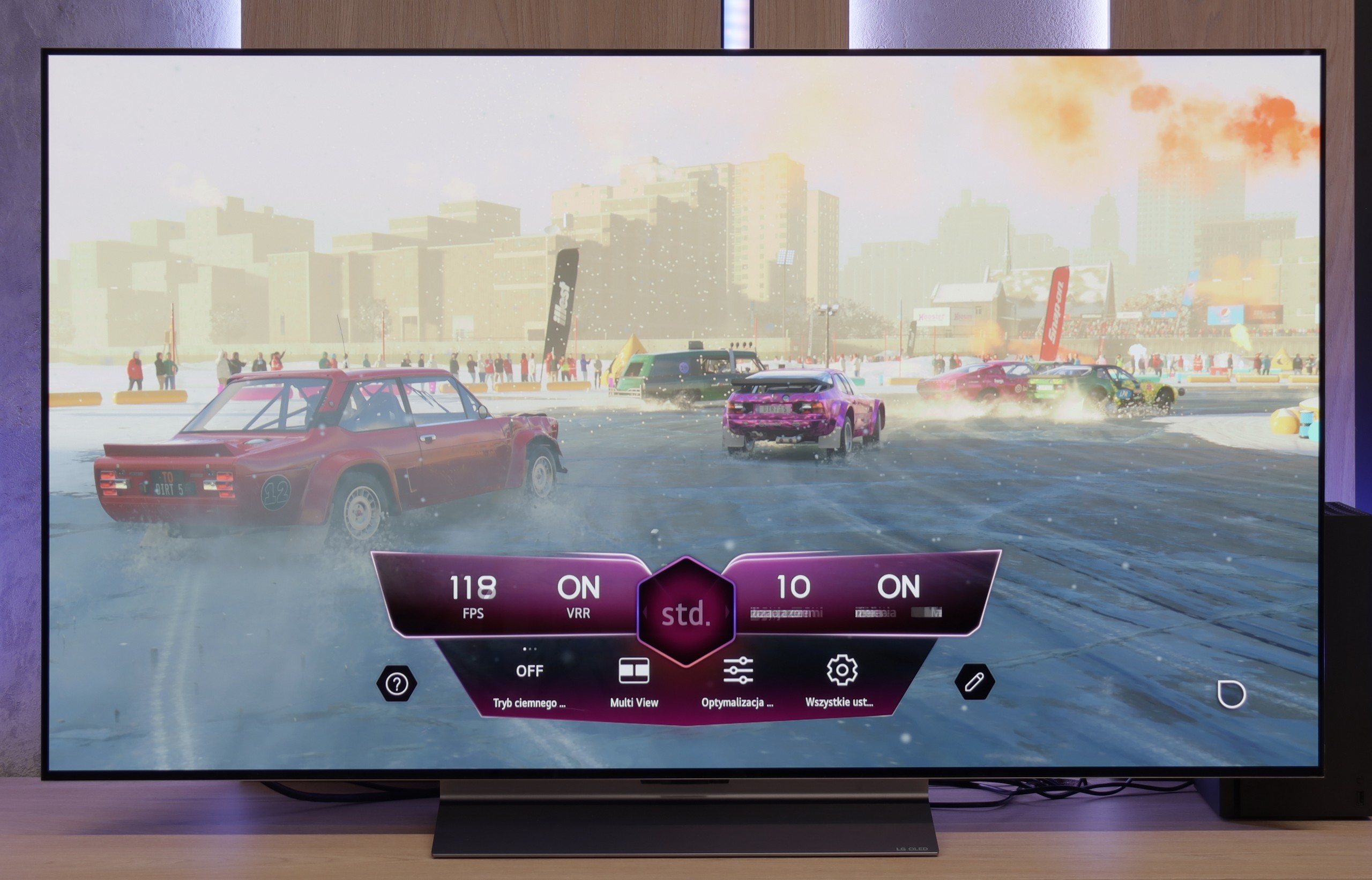

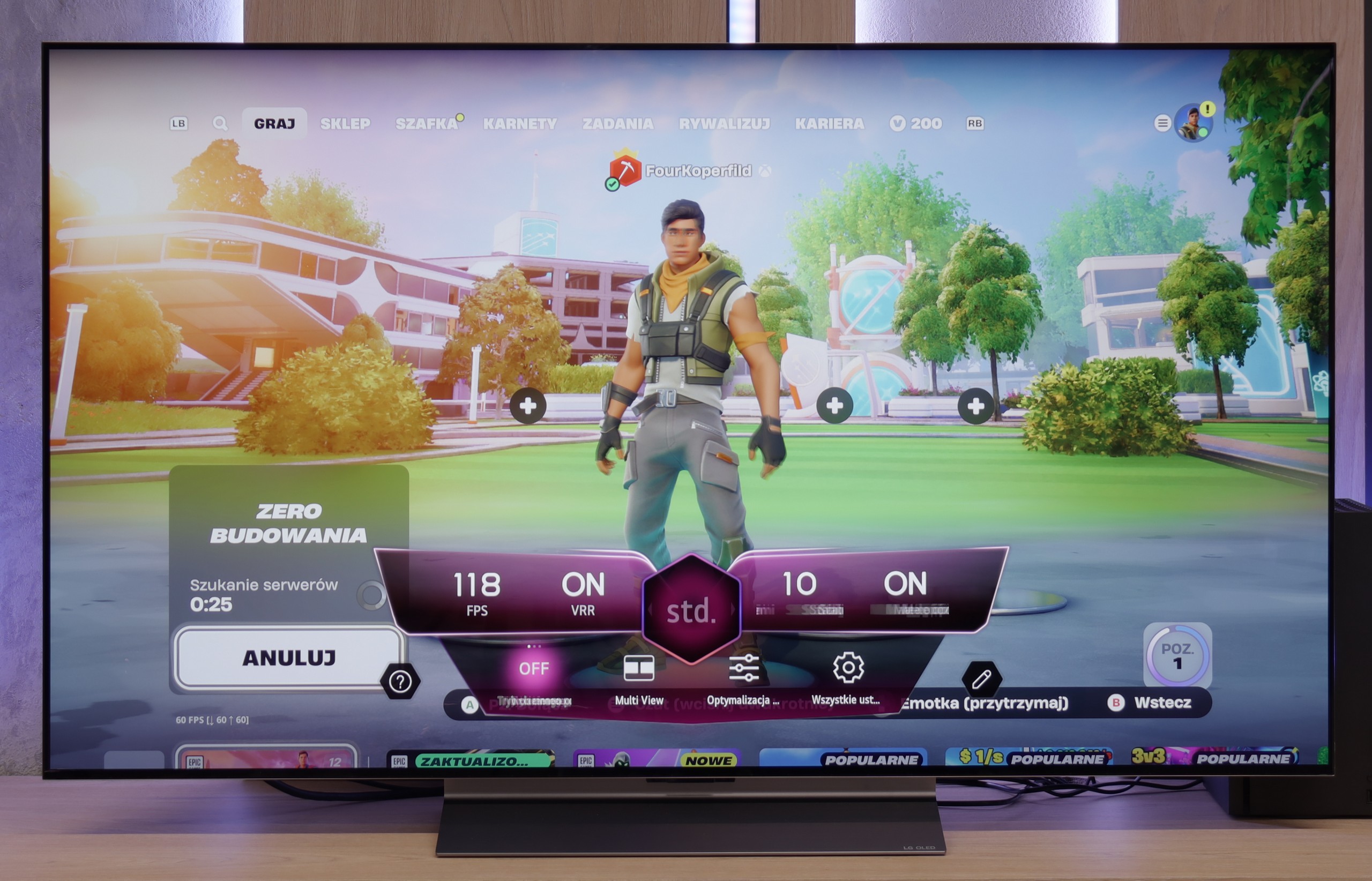
Sony X85L offers a quite solid set of features for gamers, making it an attractive choice for gaming enthusiasts. First and foremost, the television has a 120 Hz panel, which translates to smooth and dynamic image display, ideal for both fast-paced action games and more demanding sports titles. It is equipped with two HDMI 2.1 ports with full bandwidth of 48 Gb/s, allowing for the full utilisation of next-generation consoles. Additionally, Sony X85L supports VRR (Variable Refresh Rate) technology, which helps reduce stuttering and artifacts during gameplay, providing a smooth experience. The television also supports G-Sync, which is particularly beneficial for gamers using NVIDIA graphics cards, allowing for the synchronisation of the screen refresh rate with GPU performance, eliminating screen tearing. It is worth mentioning the Game Bar feature, which facilitates quick access to the most important gaming-related settings, such as VRR, brightness levels, and display modes, which is convenient and useful during gameplay.
However, there are certain limitations. The television does not support HGiG, which may be a downside for some gamers, as HGiG optimises HDR effect rendering in games, providing a more authentic visual experience. Additionally, while the Dolby Vision mode is available, it is not practical for gaming due to the very high input lag.
LG C5 is a television designed with gamers in mind – and there isn't a hint of exaggeration in that. It's hard to find anything to criticise here. We have a refresh rate of 144 Hz, full support for VRR, ALLM, and as many as four HDMI 2.1 ports with a full bandwidth of 48 Gb/s. For those who have an Xbox, PS5, Nintendo, and a gaming PC all in one room – there are no limitations, everything can be connected without any hassle.
The HDR configuration for games also poses no problems. The television correctly handles the HGiG mode, which allows for an image that matches the creators' intentions. For those interested, there is also Dolby Vision in Gaming mode, although we still recommend HGiG as the most predictable and "pure" version of HDR in games.
It also features Game Bar, which serves as a "command centre" for gamers. Everything important, from VRR settings, to picture modes, to frame rate information – is at our fingertips. The interface is simple and clear. It may look like it’s from a spaceship simulator, but it serves its purpose and just works; as it should.
C5 is truly a complete set for any gamer.
Input lag
9.1/10
10/10
SDR
HDR
Dolby Vision
Generally speaking, the input lag on the Sony X85L is very good, which is crucial for smooth gameplay and quick reactions in games. In standard modes, especially when using HDMI 2.1 and playing at a resolution of 4K at 120 Hz, the input lag is minimal.
Unfortunately, the Dolby Vision mode is an exception to this rule. In this case, the input lag reaches as much as 95 ms. Such a high level of delay makes the Dolby Vision mode virtually unplayable, as the responses to commands are noticeably delayed.
The reaction time of the LG C5 to our movements with the controller is exemplary. Regardless of the chosen resolution or frame rate, the delay is so low that in practice it is almost imperceptible. Playing on this television is simply pure pleasure. Some delay is introduced by the Dolby Vision mode, which should come as no surprise – this applies to virtually every television on the market equipped with this mode. Nonetheless, even with Dolby Vision active, the input lag remains low enough that gameplay is still smooth and responsive.
Compatibility with PC
5.6/10
8.6/10

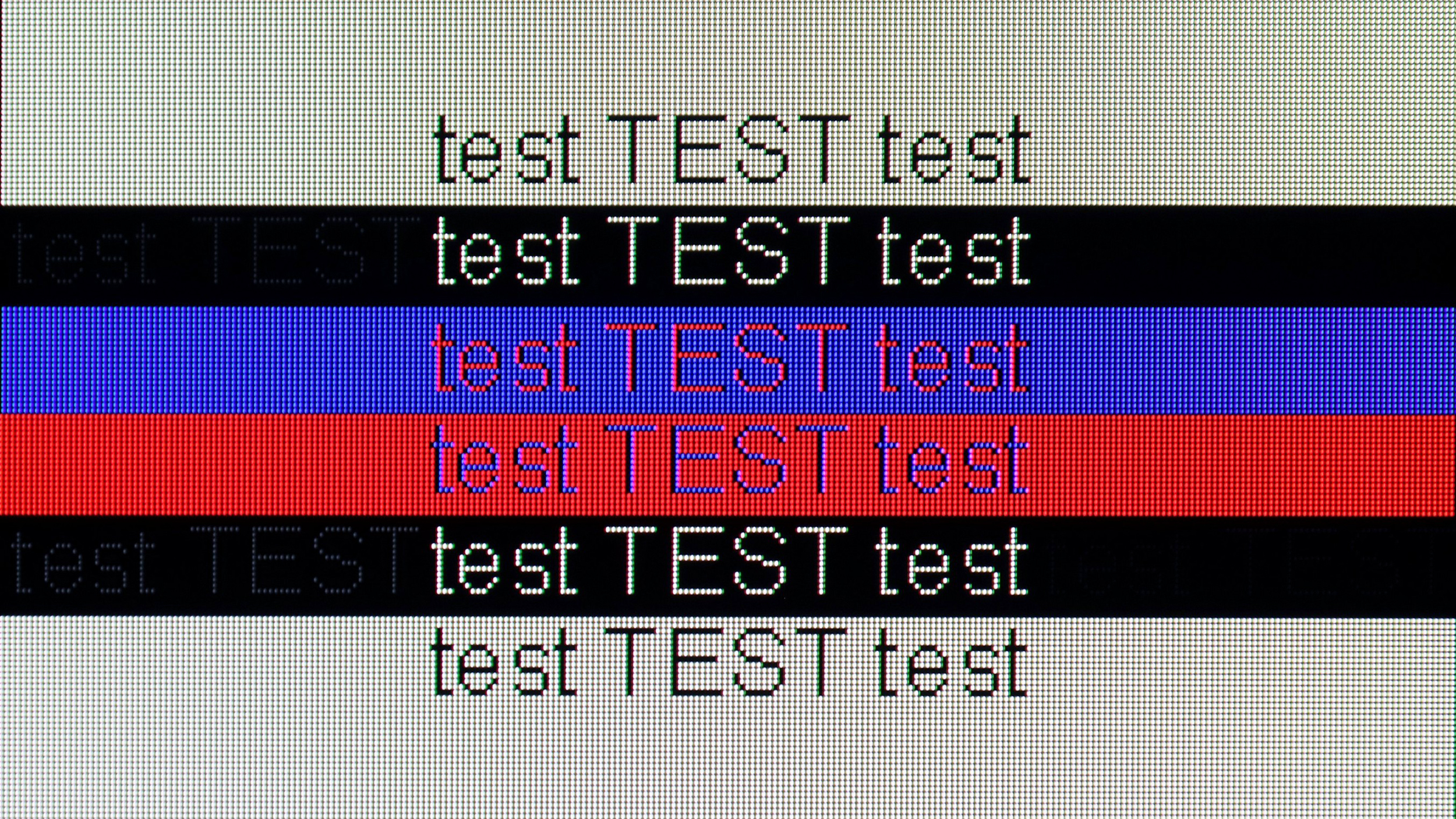
The collaboration of the television Sony X85L with a PC is a bit of a balance between image quality and user comfort. If we want to use the television for work, where clear fonts matter, we need to set the refresh rate to 60 Hz. In this mode, the text looks good and doesn't strain the eyes, which is crucial if we intend to spend a longer time in front of the screen.
On the other hand, if the television is to be used for gaming, where we can take full advantage of its capabilities at 120 Hz, we must bear in mind that the readability of fonts noticeably decreases. The image becomes less sharp, and the text harder to read, which can be frustrating. In short – Sony X85L will perform well for occasional connections to a computer, but if we need it on a daily basis for work and gaming, this compromise may not appeal to everyone.
C5 – as we wrote – is a television created for gamers, so playing even on a computer is a real pleasure. The 144 Hz panel, low input lag, and original G-Sync certification only confirm this.
When it comes to work – it is also very good. Fonts are legible, the interface is clear, but it should be remembered that we are dealing with a WOLED panel and a WRGB subpixel arrangement. (slight shadows visible behind the font). Therefore, if someone plans to place the C5 on a desk in smaller sizes like 42 or 48 inches for everyday office work, it is worth checking this for themselves beforehand. For occasional desktop use and primarily for gaming – there are no reasons for concern.
Viewing angles
3/10
7.4/10
The viewing angles on the Sony X85L, as is often the case with VA panels, are not the best. The picture looks great when viewed directly, but as soon as you move to the side, you notice that the colours lose intensity and the contrast significantly weakens. This can be an issue if the television is meant for viewing in larger groups, where viewers are seated at different angles. For those who usually watch solo or from one central spot, this won’t be a major downside, but when watching from the side, the picture quality unfortunately declines.
The viewing angles on the LG C5 are nearly perfect. Although they fall slightly short compared to technologies such as QD-OLED or WOLED with micro-lens MLA, the picture quality from a large angle still leaves a great impression. Colours remain vibrant, and the screen does not lose much of its brightness even when set at more demanding angles.
Addressing questions that circulated last year regarding the C4 model – we did not notice any green tints, pinking, or other effects in the case of the C5, which can be read about online. The picture at an angle looked really clear.
TV efficiency during daytime
6.5/10
6.2/10

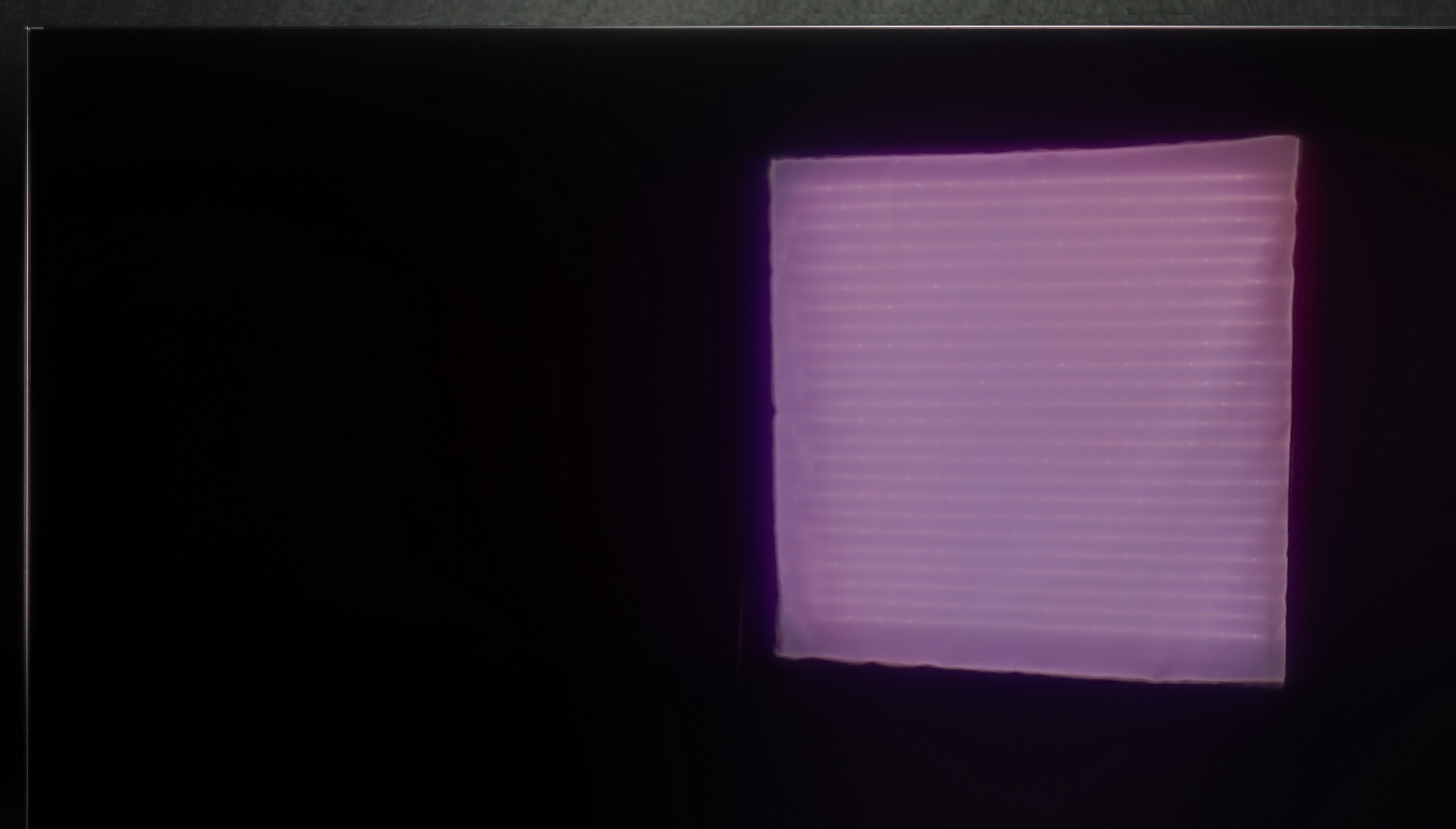

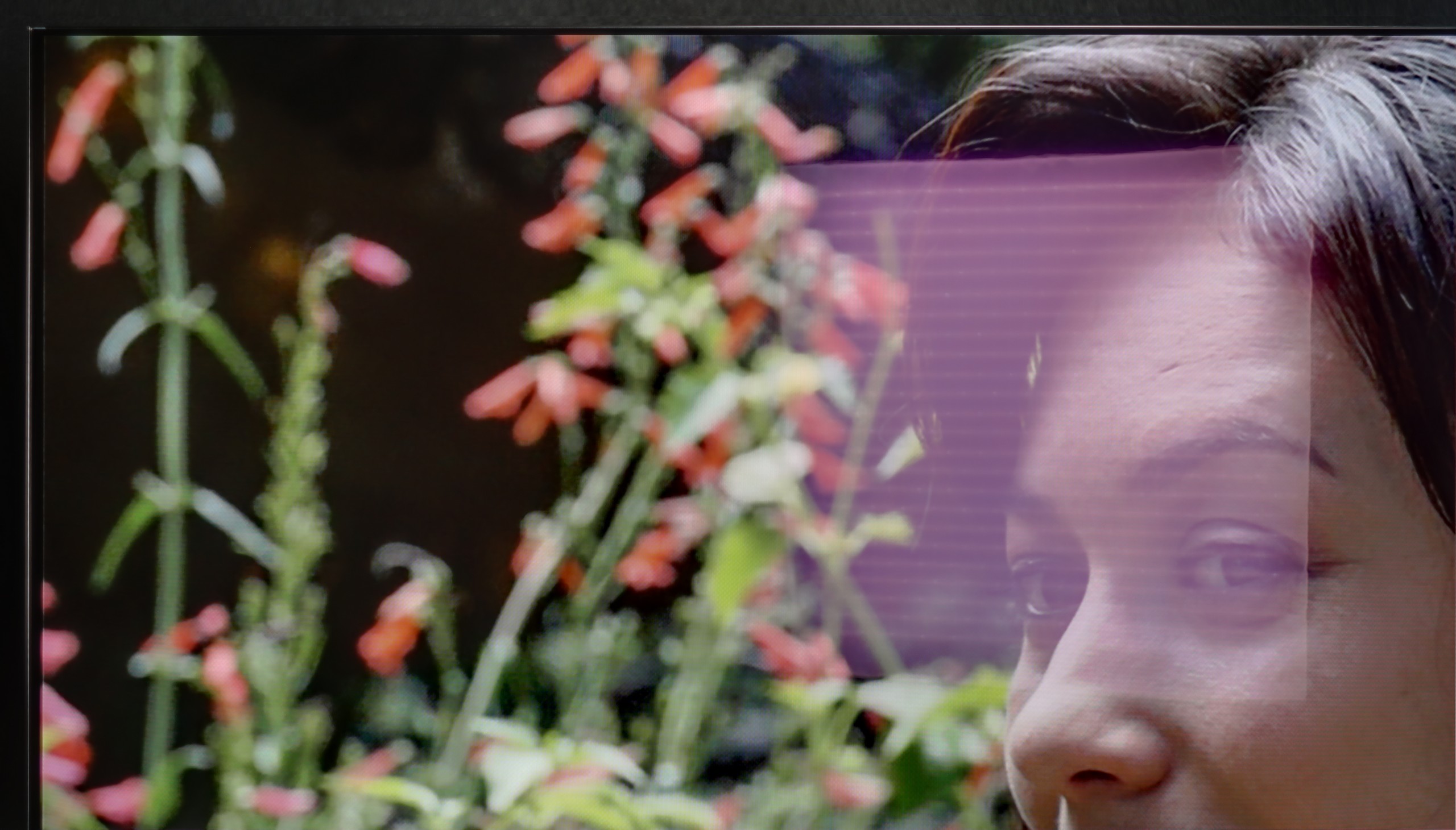
Matrix brightness
Average luminance SDR
LG OLED C5: 435 cd/m2
Sony X85L: 571 cd/m2
The performance of the television Sony X85L during the day is quite decent. Its satin screen coating handles light reflection moderately well, meaning that in bright rooms there can be some glare, but it is not bothersome enough to significantly interfere. The brightness in SDR mode at 570 nits is sufficient for comfortable TV viewing during the day, even with natural light coming in through the windows. This ensures that colours remain vivid and the picture is clearly visible, making the television suitable for everyday use.
LG C5 is one of the brighter OLED televisions on the market, so it should perform well in moderately bright rooms without major issues. The average brightness in SDR mode is around 450 nits – a value sufficient to keep the image readable even during the day. Importantly, the black does not lose depth and does not become "grey", which can still be an issue with QD-OLED panels.
A greater challenge, however, may be reflections. The WOLED panel used in the LG C5 has a glossy coating typical of this technology, which only partially diffuses reflections. In a well-lit living room with large windows, you can see your reflection on the screen – slightly muted, but still visible. In a very sunny room, it may turn out that curtains or blinds will be necessary to fully enjoy the great picture quality.
Details about the matrix
Subpixel Structure:

Panel uniformity and thermal imaging:

TV features
7.7/10
7.9/10
- HDMI inputs2 x HDMI 2.0, 2 x HDMI 2.1 48Gbps0 x HDMI 2.0, 4 x HDMI 2.1 48Gbps
- Other inputsRCA (Chinch)IR (remote)
- OutputsToslink (Optical audio), eARC (HDMI), ARC (HDMI)Toslink (Optical audio), eARC (HDMI), ARC (HDMI)
- Network InterfacesWi-Fi 2.4GHz, Wi-Fi 5GHz, Ethernet (LAN) 100MbpsWi-Fi 2.4GHz, Wi-Fi 5GHz, Ethernet (LAN) 100Mbps
- TV receptionDVB-T, DVB-T2, DVB-S, DVB-S2, DVB-CDVB-T, DVB-T2, DVB-S, DVB-S2, DVB-C
Classic features:
- Recording to USB (terrestrial TV)
- Recording programming
- Picture in Picture (PiP)
- RF remote control (no need to aim at the screen)
- Backlit remote control
- Teletext
- Audio only mode
- Bluetooth headphones support
- Simultaneous Bluetooth headphones & TV audio
Smart features:
- AirPlay
- Screen mirroring (Windows Miracast)
- Voice search
- Voice search in native language
- Ability to connect a keyboard and mouse


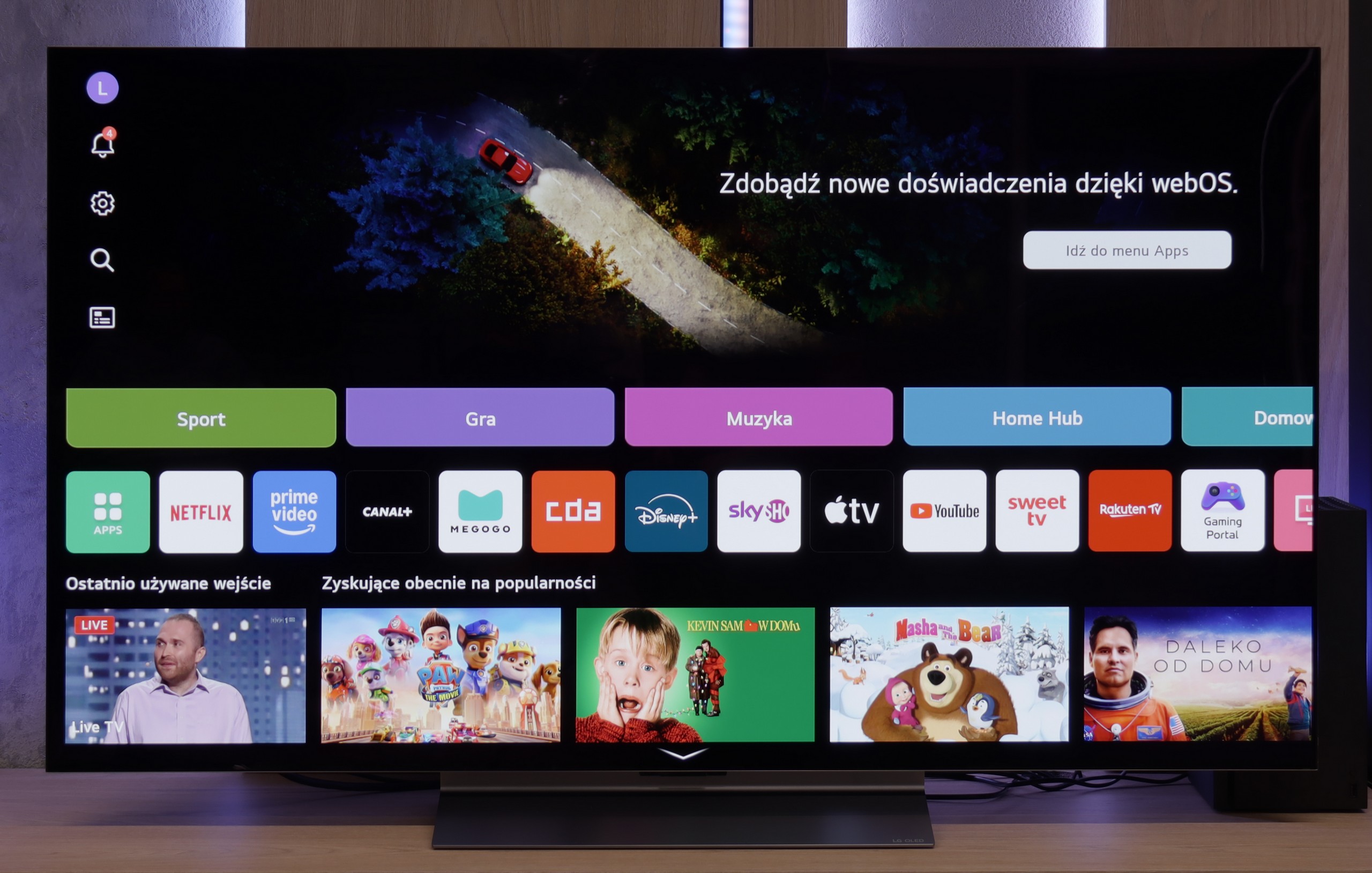
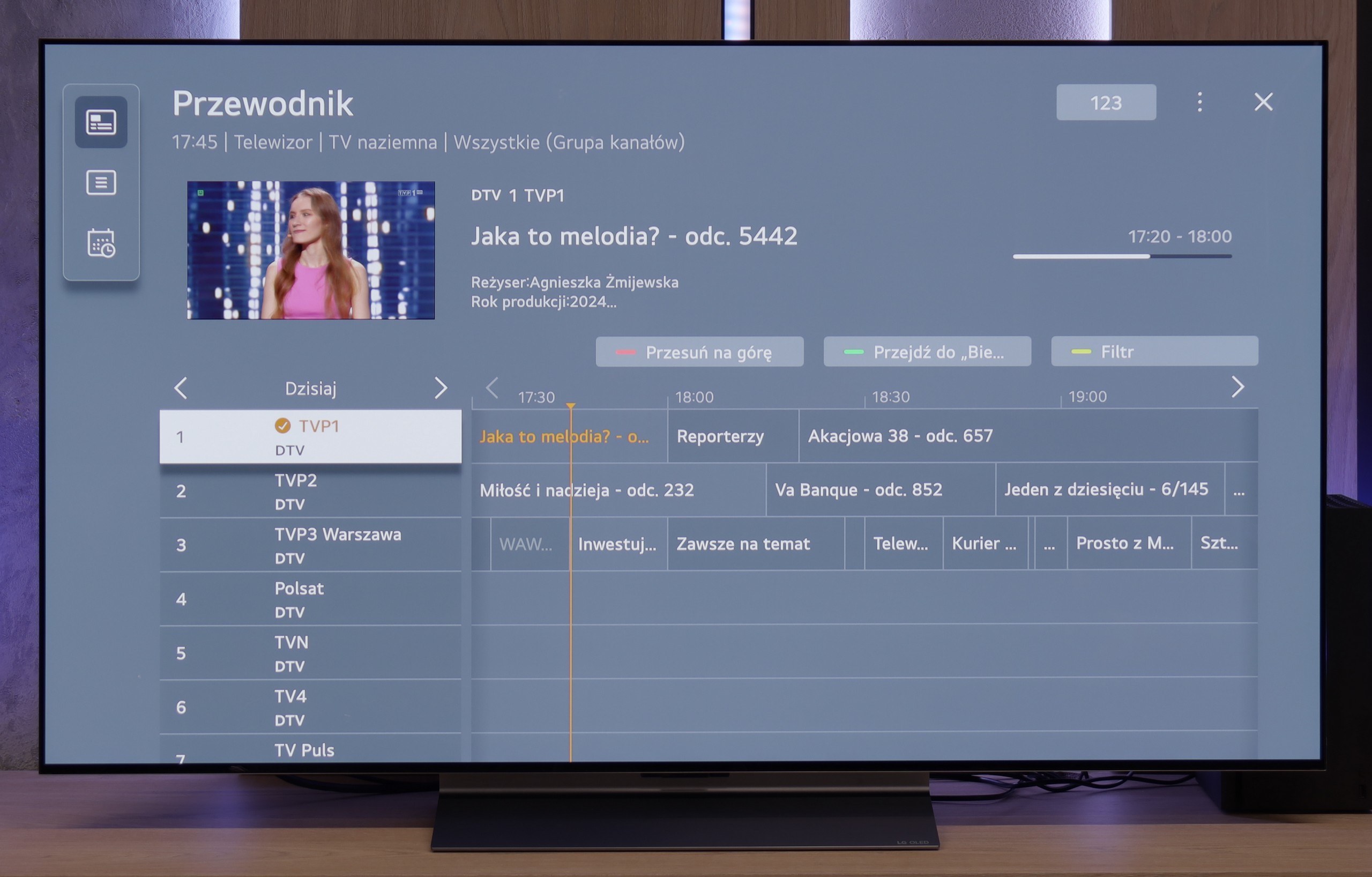
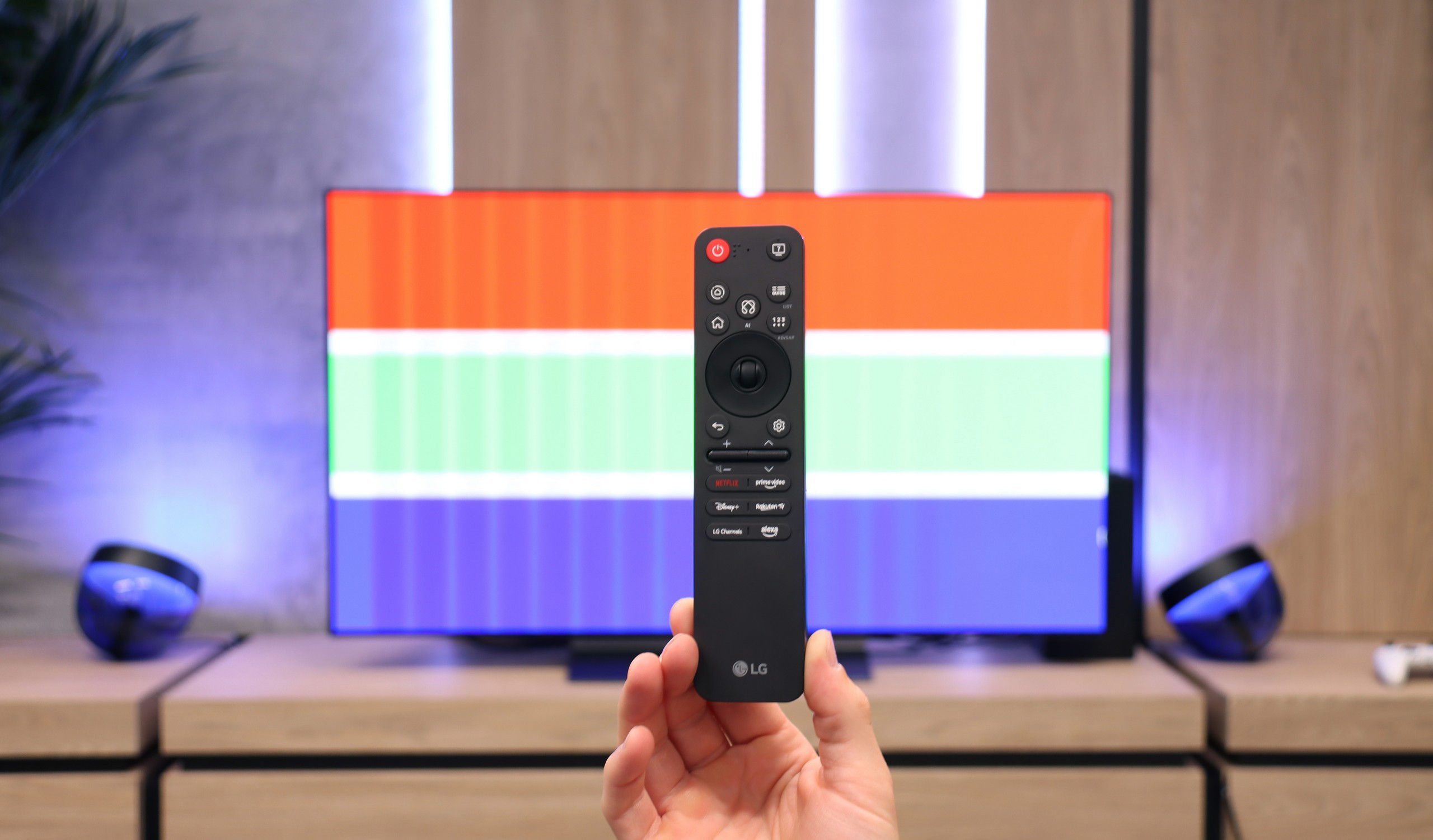
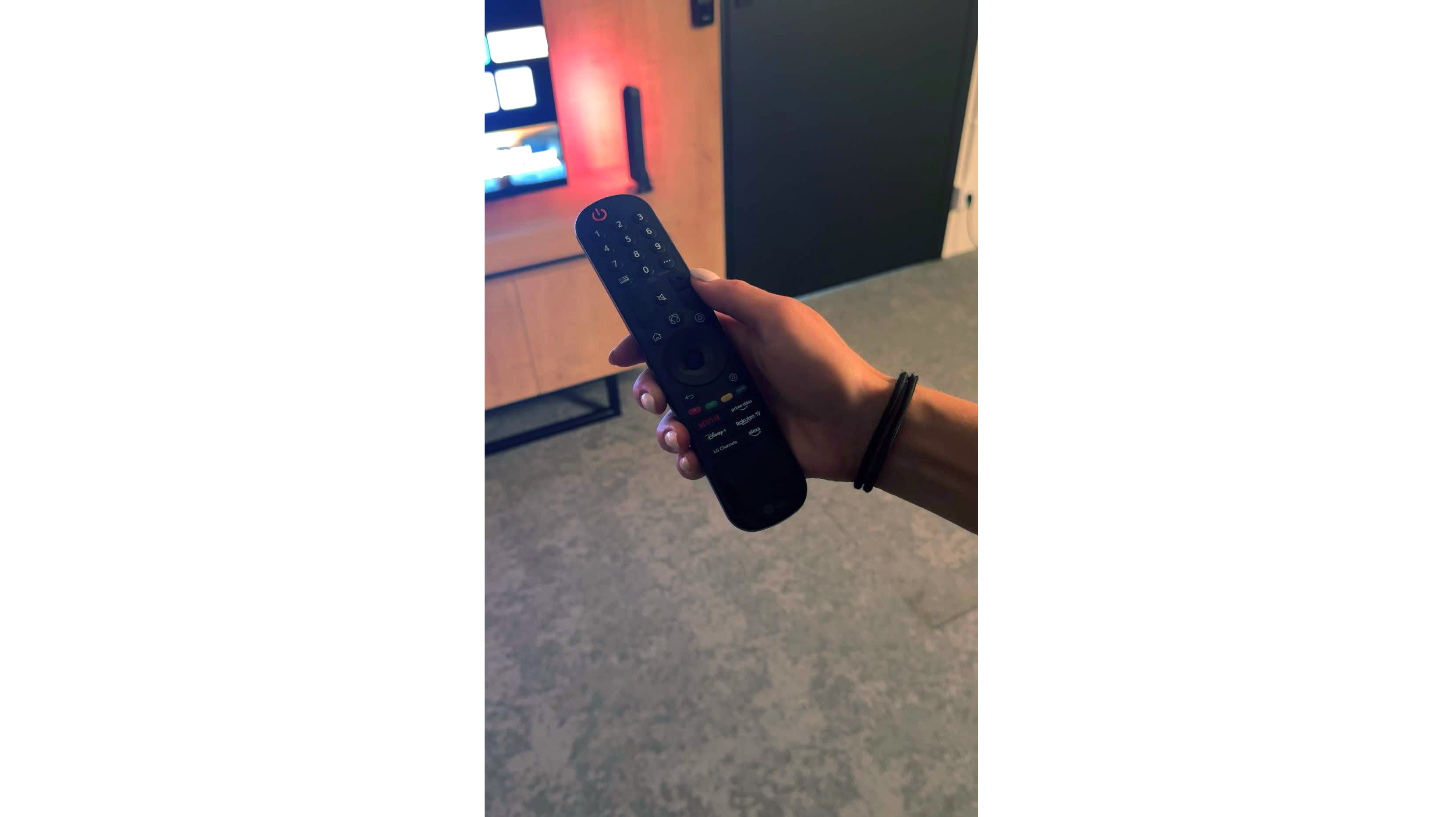
Sony X85L runs on the Google TV system, which is a substantial advantage for many users. The television offers wide access to applications, and using streaming platforms is smooth and user-friendly. The interface is intuitive and easy to master, allowing quick switching between applications and searching for favourite content. Google TV allows for personalisation of the home screen, enabling each user to tailor it to their preferences. The Google Assistant further enriches the experience by offering voice control and quick changes to settings or searching for films without the need for a remote.
In terms of user features, Sony X85L offers many useful options. The television has the capability to record programmes, which is a significant convenience for those wanting to watch their favourite content at any time. AirPlay support allows for seamless content streaming from Apple devices, which iPhone and iPad owners will appreciate. Additionally, thanks to the built-in Bluetooth, various devices such as headphones or keyboards can be connected. However, one of the shortcomings is the PiP (picture-in-picture) function, which may disappoint users who prefer multitasking on screen.
The design of the Sony X85L television, while perhaps not among the thinnest, is solid and elegant. The metal stand with adjustable feet is one of its stronger points, allowing the height and width of the television to be adapted to various furniture and spaces. This practical solution enhances the interior and adds a modern character to it.
Classic TV functions:
In terms of classic television functions, the LG C5 performs really well. Here we have the ability to record programmes to USB from built-in DVB-T(2) tuners, teletext support, an EPG programme list, as well as seamless pairing of headphones via Bluetooth. For many users, these are still very important elements of daily TV use – and here LG doesn’t lack anything except for the PIP function. It is also worth noting the remote control, or rather... the different versions of the remote. In our test, we used the C54 model, which is equipped with the new version of the Magic remote. It resembles Samsung's minimalist approach – there is no numeric keypad or "source" button, but it looks modern and is comfortable for daily use. On the other hand, other variants, such as C5ELB, may be sold with an older version of the remote – a more classic one, with more buttons and a numeric keypad. Some will find it more practical, while others will consider it outdated. In short: quite a bit of confusion, so it's worth checking the model suffix before making a purchase.
Smart TV:
Regardless of the remote's version, we operate the same system – WebOS. This is one of the most enjoyable solutions in the Smart TV world. An intuitive menu, quick operation, and support for popular features such as AirPlay, screen mirroring, and voice assistant make the system perform very well on a daily basis. Additionally, cursor control via the gyroscope in the Magic remote remains one of the most convenient forms of navigation in televisions. There are really many applications available – Netflix, Disney+, HBO Max, Apple TV, and many others. However, it should be noted that this is not a system based on Android/Google TV, so it might happen that we simply won’t find some less popular application in the LG store.
Playing files from USB
8.7/10
8.8/10
Supported photo formats:
Maximum photo resolution:

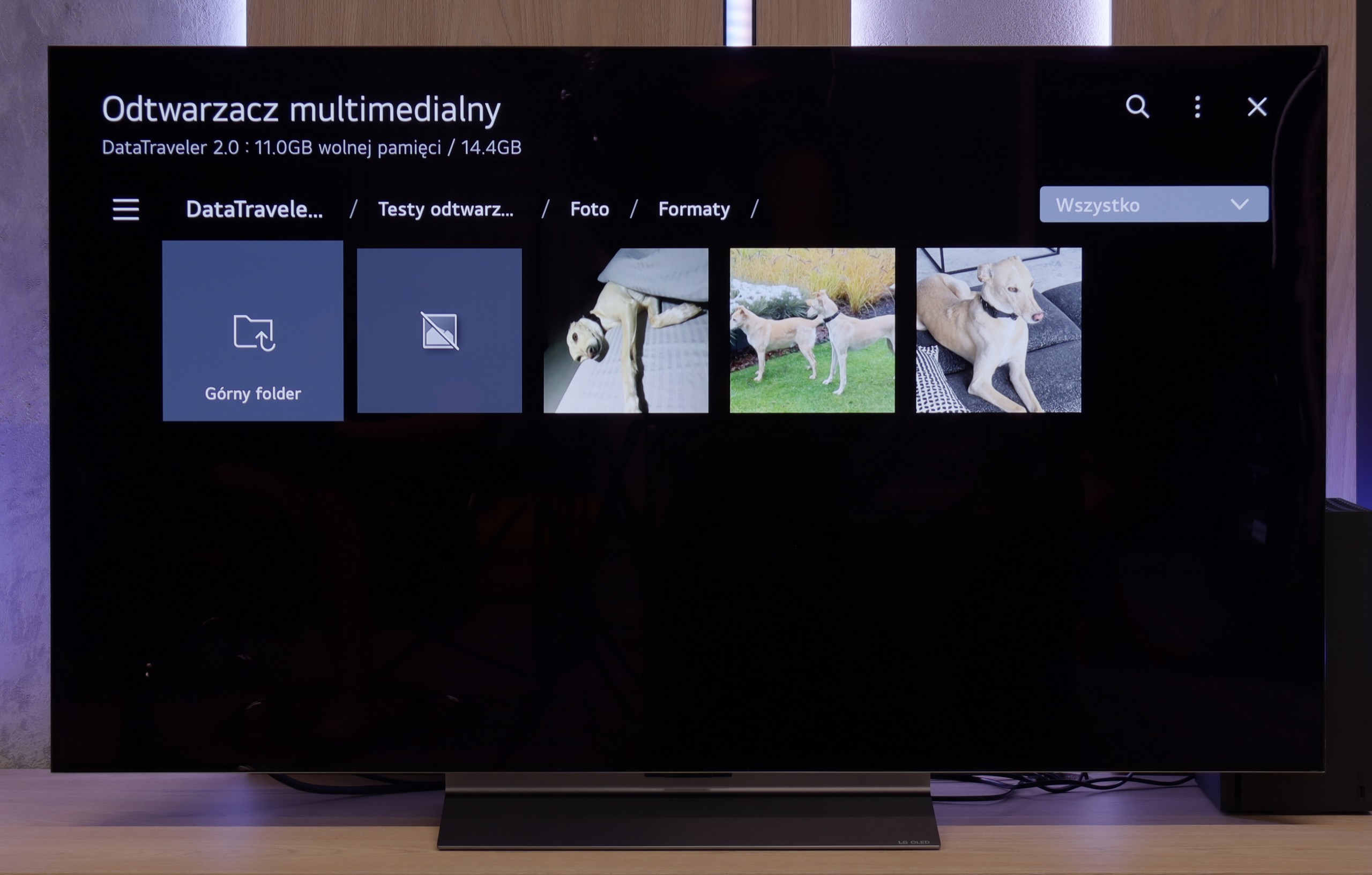
Sony X85L easily handles playback of most popular file formats from USB, which is a big plus for those who often access external content. However, it should be mentioned that there is a small downside – the built-in player does not allow for changing the font colour in subtitles, which may be troublesome for some. Fortunately, thanks to the extensive Google TV system, users have a wide range of options. Alternative media players can be easily installed, offering more personalisation options.
The LG C5 is equipped with quite a decent built-in media player, which should meet the expectations of most users. It supports popular video and audio formats, handles subtitles in SRT format, and opens most graphic files without major issues.
The interface itself is fairly simple and intuitive – it doesn't surprise, but it also doesn't cause difficulties in daily use. Of course, it's not on the level of external players or applications from Google TV, but for basic playback of films from a pen drive or hard drive – it is more than adequate.
Apps
9.6/10
9.1/10














































Sound
6.9/10
7.2/10
- Maximum volume--
- Dolby Digital Plus 7.1
- Dolby True HD 7.1
- Dolby Atmos in Dolby Digital Plus (JOC)
- Dolby Atmos in Dolby True HD
- DTS:X in DTS-HD MA
- DTS-HD Master Audio
The sound in Sony X85L is good – it is clear across the entire range, allowing enjoyment of both dialogues and music. The bass, though light, is noticeable and adds some depth to the overall sound. However, it should be emphasised that this is a subjective assessment – some may find such a sound profile satisfying, while others might need additional audio equipment to fully experience stronger tones and a more spacious sound.
For such a slim television, the LG C5 surprises with quite good sound quality. Within its thin casing, a set of specific speakers has been incorporated, which produce clear sound, with well audible details and – surprisingly – a light yet noticeable bass. It is more than sufficient for everyday viewing, and in many cases, it might even offer a pleasant surprise. It is a pity that this year LG decided to completely eliminate support for DTS codecs. For most people, this will not be a problem, but if someone uses Blu-ray discs and enjoys this format – especially in its more advanced versions – they may feel its absence. In such a case, an external amplifier or soundbar with appropriate audio support remains the option.


